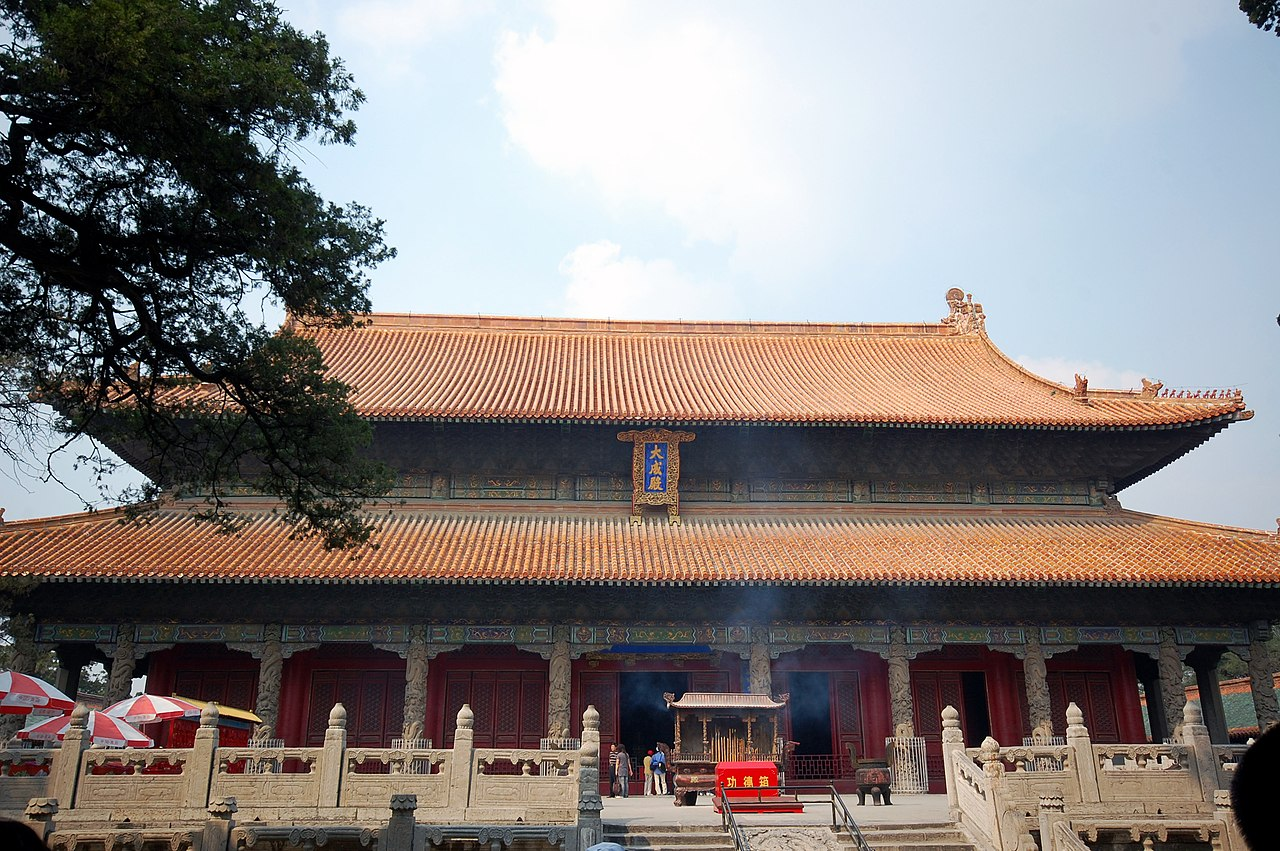More languages
More actions
No edit summary Tag: Visual edit |
m (Image) Tag: Visual edit |
||
| Line 1: | Line 1: | ||
[[File:Temple of Confucius Qufu.png|thumb|Confucian temple in [[Confucius]]'s hometown of Qufu, [[Shandong|Shandong Province]]]] | |||
'''Confucianism''', known as '''Ruism''' (儒家) in [[People's Republic of China|China]], is an [[Idealism|idealist]] [[philosophy]] based on the ancient teachings of [[Confucius]] and [[Mencius]]. It originated during the [[Spring and Autumn period]] between the fall of the [[Zhou dynasty]] and the rise of the [[Qin dynasty (221–206 BCE)|Qin]]. | '''Confucianism''', known as '''Ruism''' (儒家) in [[People's Republic of China|China]], is an [[Idealism|idealist]] [[philosophy]] based on the ancient teachings of [[Confucius]] and [[Mencius]]. It originated during the [[Spring and Autumn period]] between the fall of the [[Zhou dynasty]] and the rise of the [[Qin dynasty (221–206 BCE)|Qin]]. | ||
Revision as of 17:30, 18 May 2024

Confucianism, known as Ruism (儒家) in China, is an idealist philosophy based on the ancient teachings of Confucius and Mencius. It originated during the Spring and Autumn period between the fall of the Zhou dynasty and the rise of the Qin.
Beliefs
Confucianism promotes five hierarchical relationships: ruler and subject, father and son, husband and wife, older and younger brother, and friend and friend. It encouraged people to fit into their place in the hierarchy and properly follow rituals. 150 years after Confucius, Mencius stated that rulers who violate rituals lose the Mandate of Heaven and may be overthrown.[1] In addition to the Five Great Relationships, the traditional Confucian hierarchy placed intellectuals and government officials at the top, followed by peasants and then artisans, and with merchants at the bottom.[2]
See also
References
- ↑ Kenneth J. Hammond (2004). From Yao to Mao: 'Confucianism and Daoism' (pp. 17–8). [PDF] New Mexico State University.
- ↑ Kenneth J. Hammond (2004). From Yao to Mao: 'Economy and Society in Southern Song' (p. 19). [PDF] New Mexico State University.
